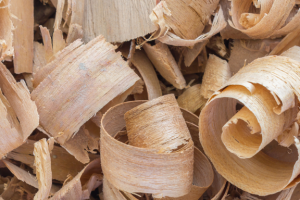Despite woodchip exports lifting to 651,265 bdmt in June, other than an average export price, there is only a small amount of additional data available. In some respects, that’s a shame because monthly exports crossed the 600,000 bdmt mark for the first time in two years and the details are important to understand.
The only woodchip export data formally available is the monthly total and average prices for each of hardwood and softwood chips. That data, provided courtesy of IndustryEdge, is presented here:
|
June 2021 |
‘000 bdmt* |
AUDFob/bdmt |
|
Softwood |
82,516 |
152.37 |
|
Hardwood |
568,749 |
201.75 |
|
Total / Wtd Average |
651,265 |
195.49 |
* bone dried metric tonnes
The chart displays the details for the combined exports since January 2017, with the exception of very small volumes to additional countries.

Most notably, the data shows the very significant volumes that are now reported as ‘No Country Details’. This is the volume captured under confidentiality restrictions, under which exporters can be allowed to ‘mask’ key details of their trade for commercial reasons. We will leave readers to their own consideration of these matters.
IndustryEdge advises that the hardwood chip exports were partially masked in July 2020, then fully masked after the end of September 2020. Softwood chips followed suit commencing from June 2021.
In 2020-21, Australia’s total chip exports were 8.3% down on the year earlier, totalling 4.791 million bdmt, with the 4.024 million bdmt of hardwood chip exports down 15.1% and the 0.767 million bdmt softwood chip exports up 58%.
The latter is important. Softwood logs can no longer be exported to China. Chipping the logs is a viable option for export for at least some of that wood, which may be a reason exports are up, and possibly, why the annual weighted average price is 16.0% lower than a year ago and trending down.
Despite the formal woodchip export data being unavailable, there are alternative datasets. IndustryEdge’s vessel tracking provides more up to date information, detailing the movement of woodchip ships from Australian ports, to destination ports, as can be seen below for the period from 1st July to late August 2021. This shows all nineteen vessels that departed Australian waters over that period. There are multiple views and the charts can be toggled to see the data. Charts and data are easily downloaded.


[partial screenshot, zoomed in]
The woodchip trade is a modern-day staple of the Australian industry, taking on a new prominence in an era when China is flexing economic muscles and banning imports of products like logs. For all that makes woodchip exports a compelling line, efforts in industry continue to emphasise the opportunities for domestic value adding. That at least, is how it should be.
To understand supply of woodchips in major destination countries, it is relevant to examine the country of destination data. Here we can see that to China, for instance, since the imposition of the ban on importing logs from Australia in November 2020, China’s total intake of woodchips (from all countries) has lifted from 2.9 million bdmt to a high of 4.6 million bdmt in May 2021. Prices are shown in USDFob/bdmt.

Vietnam is the main exporter to both the major customers, China and Japan, but for hardwood chip Australia is a clear second-placed supplier.
Japanese imports from all countries are detailed below and again, prices are shown in USDFob/bdmt.

Access to formal trade data aside, the Australian and global woodchip trade is in good condition and relatively stable, including for exports from Australia – at least for now.
To understand more about IndustryEdge’s approach to vessel tracking and its extensive library of downloadable data files, click here.



